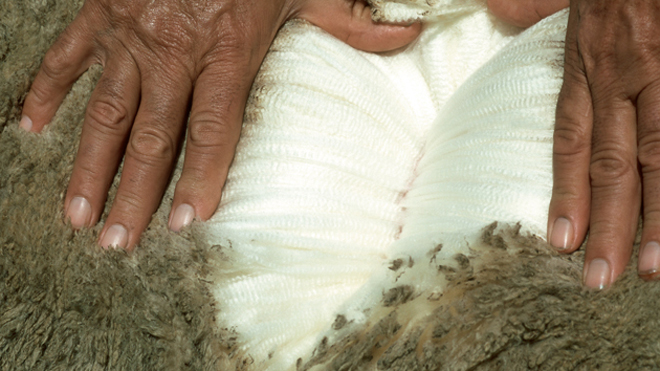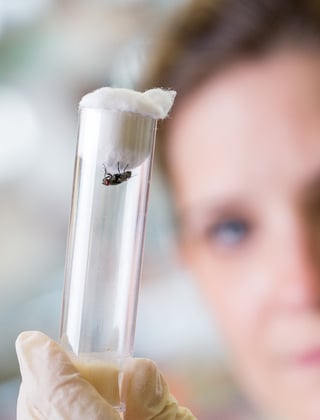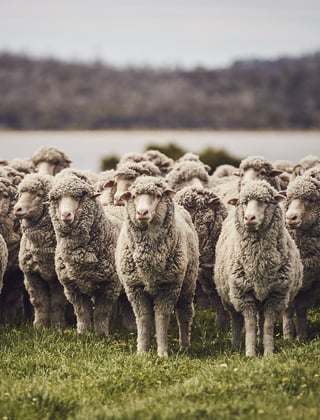Vital management of chemical residues

It is critical that woolgrowers understand and comply with the regulatory limits when using chemical products on their sheep. Following the rules not only optimises the welfare of the sheep, but it also maximises the safety of the operator, the health of the environment and the positive eco-credentials of Australian wool in the marketplace.
Woolgrowers rely on a range of animal health products to protect their sheep from internal and external parasites such as worms, lice and blowflies. One consequence of using chemical products is the potential presence of residues in body tissues and wool for a period after the product’s application.
For all registered veterinary products in Australia, there are in place regulatory time periods following the chemical’s application that indicate when the residue that remains in or on meat and wool products will not exceed the maximum residue limit (MRL).
The Australian Pesticides and Veterinary Medicines Authority (APVMA) sets MRLs for all registered veterinary chemicals in agricultural produce. To find out the time constraints, always read the product label or view the APVMA or ParaBoss websites (see the ‘More information’ section below).
AWI Program Manager, Animal Wellbeing and Industry Resilience, Carolina Diaz, says the mandatory time constraints have been set to ensure lamb and sheep meat is safe to eat, wool and sheep are safe to handle, and wool scour effluent is safe for the environment.
“It is extremely important that woolgrowers comply with the mandatory time constraints following the application of chemicals to their sheep,” Carolina said.
“As well as minimising any harmful impacts of chemicals on farm workers, it also helps establish the fibre’s positive eco credentials amongst environmental rating agencies, governments, the textile trade and consumers.
“It’s especially critical for woolgrowers to take extra care if they treat their sheep outside of their usual timetable or have had to change their shearing schedules.”
"Effective chemical residue management ensures the wool is suitable for sale into markets that are increasingly concerned about the provenance of their products, including residues remaining on fibres."
Carolina Diaz, AWI Program Manager
What are the important time periods?
Sheep rehandling interval (SRI)
The SRI is the time between treatment and when wool or sheep can be safely handled without the need for protective clothing. If an SRI is included on a product label, this must be observed to protect those handling the sheep or wool, and to protect the environment in the case of wool processing residues. For some products, the SRI is short, only requiring the product to become dry on the sheep.
Wool harvest interval (WHI)
The WHI (equivalent to wool withholding period) is the time from application of a chemical to when the wool can be harvested (this includes crutching) to satisfy Australian environmental requirements. Most chemicals used to treat external parasites, such as sheep lice and sheep blowflies, bind to the wool grease rather than the fibre itself. The scouring process removes wool grease and most other contaminants at the same time, which can result in contaminated scour effluent and lanolin if the WHI is not adhered to.
You can estimate the pesticide residue levels on wool at shearing caused by lice or flystrike treatments by using the ParaBoss Wool Residue Tool at www.flyboss.com.au/flystrike-tools/woolres-tool
If a lice or fly treatment does not state a WHI or a SRI, then a default one-month period applies for mob treatments or for wound dressings. Flystrike treatments for individual sheep have a default withholding period of at least one month for wool.
Meat withholding period (WHP)
The meat WHP is the time from chemical application to when an animal may be slaughtered for domestic consumption. Although lice control and flystrike products are applied to the skin or wool of the sheep, the skin absorbs some of the product, or in the case of jetting or dipping for lice control, the sheep may ingest or inhale small amounts of the chemical. The specified WHPs are in place to ensure no detectable levels of these chemicals are left in muscle, fat or other body tissues.
The wool withholding period is equivalent to the wool harvest interval (WHI), see above.
Export slaughter interval (ESI)
In addition to the meat WHP, sheep producers need to be aware of the ESI. The ESI is the time from chemical application to when an animal may be slaughtered for export. Some products have a relatively long meat WHP or ESI. Take care when treating lambs to ensure this will not delay their planned sale.
A trade advice statement (such as an ESI) may not appear on labels of older registered veterinary products, however all new products now include a trade advice statement. If you cannot find the ESI on a product label, use the ParaBoss Products Search tool available on FlyBoss or LiceBoss (see ‘More information’ below).
More information:
- Find the SRI, WHI, WHP and ESI for registered parasite treatment products using the ParaBoss Product Search tool, available at: www.paraboss.com.au/tools
- APVMA website (Pesticides and veterinary residues): https://apvma.gov.au/node/10806
- APVMA PubCRIS database search (chemical registration information): https://portal.apvma.gov.au/pubcris
- Best practice information for applying flystrike chemicals: www.wool.com/demystifly
Frequently asked questions about residues
What are the main causes of unacceptable chemical residues in wool?
Higher residue levels occur from not following the label directions for application, improper timing of treatments, ignoring withholding periods, or overdosing chemicals.
How can I comply with withholding periods to avoid residue levels?
Always read product labels, follow WHI, WHP, ESI and SRI legal requirements, and use tools like ParaBoss for accurate residue management.
What are the best practices to minimise unacceptable residue levels in wool?
Always adhere to product label instructions, optimise the timing of treatments and keep detailed records of chemical use.
Does the increasing resistance of blowflies to chemical treatments impact residue levels in wool?
No. Although some chemicals might no longer be as effective against blowflies as they once were, the strength of the chemicals remains the same, which means residue levels in wool are not impacted.
Does the level of chemical on shorn wool break down like it does on the sheep?
No, chemicals do not break down in wool bales in the same way as they do on the sheep. A lot of chemicals rely on UV and rain to breakdown.
Can I shear or crutch sheep during the withholding period if flystrike is severe?
Always adhere to product labels and WHIs. You may need to look for another chemical option with a short WHI to address the flystrike risk until the WHI period expires and increase sheep monitoring and treatment.
What should I do if my shearing time falls within chemical withholding periods?
Shearing needs to be delayed to comply with label directions. In the long term, you can adjust chemical application timing or product. Consult your trusted advisor for guidance on compliance with WHI and SRI.
Does overdosing chemicals increase residue levels in wool?
Yes, overdosing leads to higher residue levels. Compliance with the product label is critical.
Best practice product application
To achieve the correct application of chemicals, woolgrowers should read product labels closely (and the material safety data sheet, if necessary) and take care with the preparation and dispensing of the product.
Equipment must be suitable and set up correctly. Ensure correct calibration of the delivery tools and apply the product to well-prepared and contained sheep. Operators must take time and care with every sheep.
To ensure the safety of the operator:
- Follow the safety direction on the label.
- Store chemicals correctly and securely.
- Wear protective gear.
- Carefully pour and mix chemicals.
- Have water, soap and towel ready to wash splashes off.
- Have clean-up equipment ready for spills.
- Wash hands before eating, drinking or smoking.
- Wash and store equipment straight after use.
- Change your clothes when you have finished chemical work.
This article appeared in the December 2024 edition of AWI’s Beyond the Bale magazine. Reproduction of the article is encouraged.















